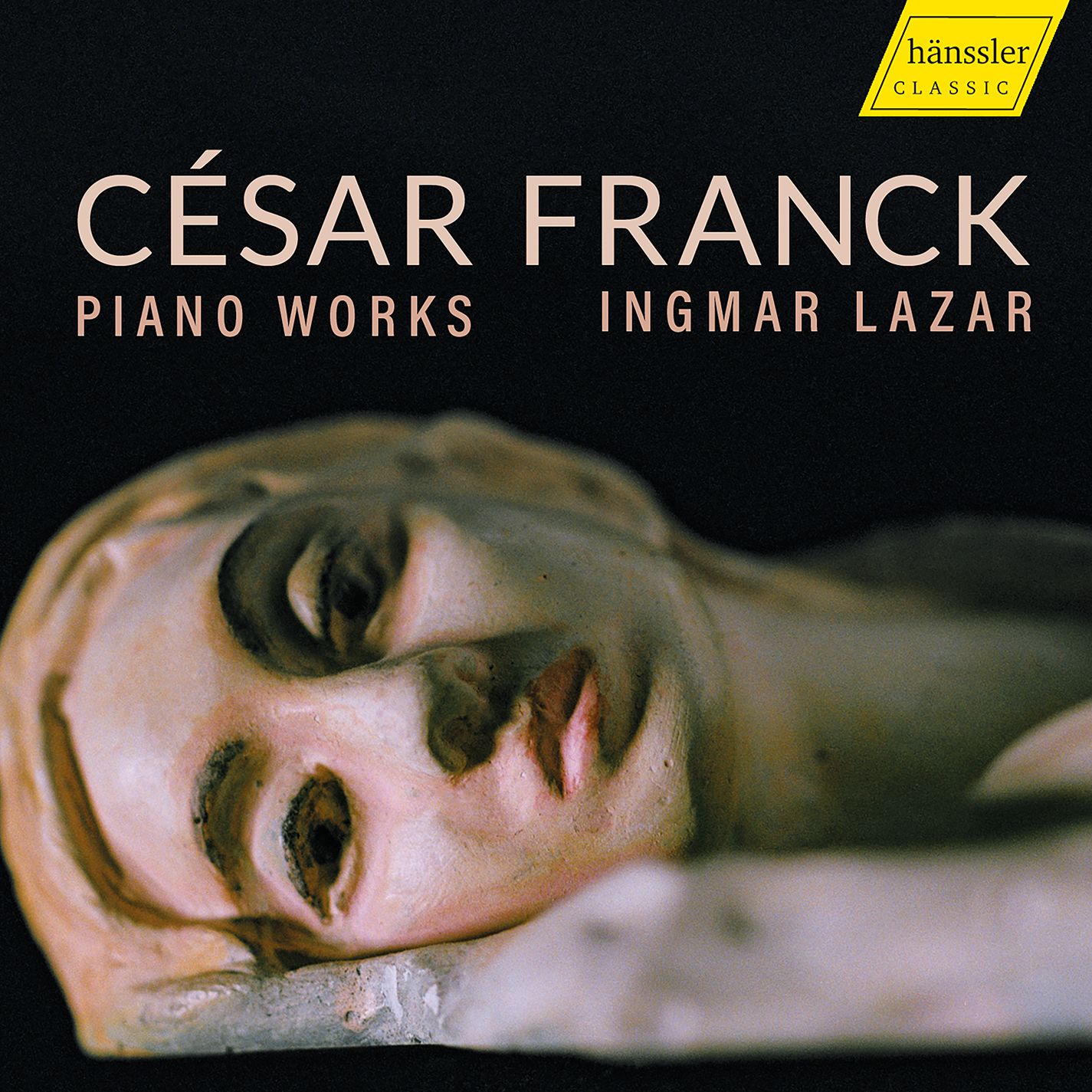The Piano Music of César Franck

This new Hänssler disc presents both early and late works by César Franck, in the hands of French-born pianst Ingmar Lazar. Lazar is something of a prodigy, giving his first recital at teh Salle Gavreau at the age of six. He is a multiple prizewinner, including of the Tabor Foundation PIano Aard at Verbier in 2013, He has worked with such pianistic luminaries as Malcolm Bilson and Fou Ts'ong, and achieved a master's deegree at the Universität Mozarteum, Salzburg
Ingmar Lazar begins with Franck's Piano Sonata No. 1 (Op. 10). The composer entered the École royal de musique in Liège in 1827; in 1835 he gave his first public performance there. Given that he was bon i1822, this is quite some going!. Later, he went to Paris and studied with Reicha, Pierre Zimmerman and Hippolyte Colet. Returning to Liège, Franck wroye the three-movement Piano Sonata heard here, written when he was all of 13. The piece is absolutely not what one associates with Franck: it is Classical in demeanour and dervivative, and yet has charm. Here’s the first movement:
There are surely more than hints of Beethoven (or, to my ears at least, Cimarosa) in the central Adagio-Andane moderato, and Lazar’s touch here is lovely, with a singing cantabile:
The finale is glittering. It sounds at times like it is an orchestral reduction, at others like it could be used for a fairground ride (!) - plus there's a lovely, lyrical counter-melody:
When Franck left the Paris Conservatoire in 1842, his style moved to.a more personal means of expression. He was pushed by his father towards a virtuoso career, and the Grand Caprice (Op. 5, FWV 13) is in the tradition of showpieces by the likes of Liszt, Hummel and Moscheles. It does begin with a characteristic Franck harmony, though, and there is a chordal passage that is all-Franck. Yet some of the pianistic writing is clearly derivative of the great Romantics:
This is a wide-ranging piece, just a touch under quarter-hour and yet skilfully written.
The Prélude, Aria et Final was written in 1886/7, and is mature Franck (it is actually teh latest work on thsi disc), full of the characteristic chromiaticism so linked with thsi composer, and, formally, a cyclic work (unified by particular motiffs throughout). The 22-minute piece feels vast. Lazar is blissfully unhurried as he realises the majesty of the extended “Prélude”:
.. the Lento, a set of variations, is quite distinct from the Prélude (significant when we come to the last piece on the disc). Lazar’s reading is full of beauty and integrity:
Interesting how the opening of the “Final,” as heard in the context of this disc, seems to initially hearken back to the Lisztian Grand Caprice heard earlier. But the overall feel is pure Franck, and how beautifully Lazar realises the textures, his evident virtuosity fully within Franck's expressive world:
The Prélude, Chorale et Fugue is probably Franck's best-known work for piano. It is given a fine performance here by Lazar. Franck's thematic mateial pays homage to Bach (the cantata Weinen, Klagen, Sorgen, Zagen and the Crucufixus from the B-Minor Mass), and Wagner”s Parsifal (the perfect fourth-based so-called “Bell motif”). This surely is Franck at the height of his powers. Again, it is a cyclical work. Lazar's reading is stately, full of integrity, with a Bach-like intensity to the Fugue. Here's that final movement:
A fascinating disc, then. I still admire Ashley Wass in this repertoire, and his Naxos disc (that couples the two major late works with different, earlier works) would be an ideal complement to Lazar’s (sadly listed as currently unavailable at Amazon but luckily available vis Spotify).
